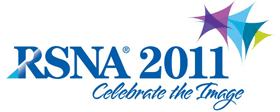
Abstract Archives of the RSNA, 2011
LL-ERS-WE3A
Current Role of Multidetector Computed Tomography in Patients after Midface Trauma
Scientific Informal (Poster) Presentations
Presented on November 30, 2011
Presented as part of LL-ERS-WE: Emergency Radiology
Jan Martin Sohns MD, Presenter: Nothing to Disclose
Wieland Staab MD, Abstract Co-Author: Nothing to Disclose
Ulrike Streit MD, Abstract Co-Author: Nothing to Disclose
Joachim Lotz MD, Abstract Co-Author: Nothing to Disclose
Assessment of the clinical value of multidetector computed tomography (MDCT) in the diagnostic work-up of patients with facial trauma: A retrospective analysis.
784 patients (median age: 51 years, male 64%) with MDCT of the midface after trauma between 2007 and 2009 were evaluated retrospectively. Multiplanar 2D and 3D reconstructions were used. The number and location of fractures and incidental findings were identified. Findings were correlated with clinical information. Fractures were classified as to mandate surgical therapy (Group A: fragmentary and/or luxation fractures; bleeding, nerve palsy) or conservative treatment (Group B). Likewise incidental findings were evaluated as clinically significant (Group 1) or non-significant (Group 2).
470/784 patients (60%) sustained a fracture. Group A fractures were found in 694/1213 fractures (57%): orbita 150/694 (22%), maxilla 143/694 (21%), nasal bone 75/694(11%), zygomatic bone 65/694 (9%). Luxation fractures occurred in 25%: Fractures with bleeding (29%) or fragmentary (17%) fractures. Group B fractures were observed in 519/1213 (43%) fractures. Indications for MDCT were due to injuries sustained from falling 360/784 (46%), traffic accidents 219/784 (28%) or physical violence 120/784 (15%). 972 Incidental findings were observed in 464/784 (59%) patients. Therapeutic relevant Group 1 abnormalities were found in 358/972 findings (37%): intracranial abnormalities 112/358 (31%), maxilla sinusitis 84/358 (24%), vascular malformation 26/358 (7%). As an overall average there were 1.5 fractures and 1.2 incidental findings per patient.
MDCT is the single most important imaging modality in midface trauma to determine surgical vs. conservative treatment options. There is a 37% prevalence of incidental findings with therapeutic relevance. Radiologists have to be aware of fractures mandating surgical treatment as well as incidental findings that might influence the individualized therapeutic pathway of each patient after trauma in short period of time.
To optimze clinical and diagnostical management of patients after midface trauma.
Sohns, J,
Staab, W,
Streit, U,
Lotz, J,
Current Role of Multidetector Computed Tomography in Patients after Midface Trauma. Radiological Society of North America 2011 Scientific Assembly and Annual Meeting, November 26 - December 2, 2011 ,Chicago IL.
http://archive.rsna.org/2011/11000100.html

